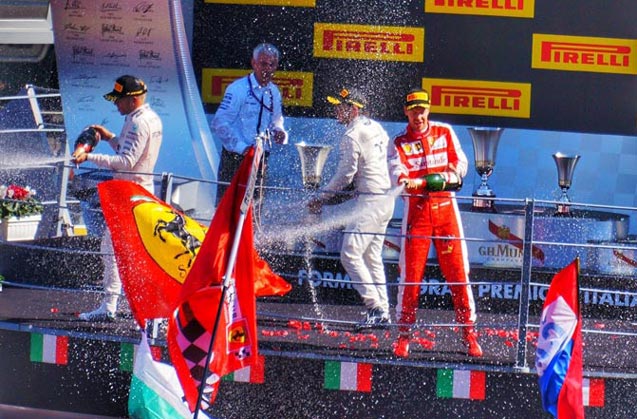The Ultimate Team Sport

Formula 1 may not be everyone’s cup of tea when it comes to spectator sports. In fact, it wasn’t my cup of tea until a few years ago. I would say “Who watches that? It’s a bunch of machines going around a track. How is that a sport?” Well, thanks to a long-haul flight and a recommended on-board documentary, my eyes were opened to why Formula 1 really is the ultimate team sport and an interesting parallel to our little microcosm of Workday consulting.
It’s important to note that in Formula 1, every single team individually constructs its car. It’s like a fingerprint; no two cars are identical. Therefore, when you talk about the composition of a Formula 1 team, it’s not simply two drivers and two cars battling for race wins. You have teams of designers who spend endless long nights figuring out how to adjust the aerodynamics to shave mere hundredths of seconds off lap times. You have mechanics who are charged with ensuring each and every nut, bolt, hose, and thousands of other components are accounted for and perfectly machined and assembled at break-neck speed. You have strategists who analyze copious amounts of data both in advance of and during race weekends to determine the exact moment to pit the car because a) the tire wear is now losing the team precious time on each additional lap and b) on exit of the pit lane, their car will be ideally positioned ahead of the competing cars instead of following behind in the aerodynamically turbulent wake. Finally, you have the drivers tasked to take the final product created by the designers, mechanics, and strategists and throw it around a circuit at blistering speeds in excess of 200 mph and peak forces of up to 8 Gs.
More so than in any other sport, the team members off the court/field/ice/track have a direct impact on the outcome of the competition. Every teammate must be on their A-game or success is in immediate jeopardy. A few examples of that come to mind:
- For the 2015 campaign, the Ron Dennis-led McLaren team made the decision to move from Mercedes engines to Honda. Three years later, that decision is still relegating the once mighty McLaren and one of the great drivers in Fernando Alonso to the back of the field thanks to an underpowered Honda engine design that is also prone to reliability issues.
- During the 2016 Monaco Grand Prix, Daniel Ricciardo was called into the pits for a tire change, but due to an uncharacteristic miscommunication the pit crew was not ready for him, costing him the lead and a race win by just 7 seconds.
- Later that same season in Montreal, a strategy error overestimated tire wear on race-leader Sebastian Vettel’s Ferrari, demoting him to second thanks to the 20 second delta on his unnecessary pit stop. That mistake alone was enough to put Lewis Hamilton on the top step.
So, by now you’re probably saying: “Ok, thanks for the lesson in Formula 1 team dynamics.” Now to get to the parallels.
Just like Formula 1 cars, no two Workday deployments are the same. They don’t all fit into one uniform specification. Sure, there are regulations and guidelines, but each one presents unique requirements, opportunities, and challenges. As we execute these deployments, there are nearly identical areas of responsibility to Formula 1: Design, Strategy, Implementation, and Execution. And just like grand prix racing, the end result is dramatically impacted by each member of this composite team – Workday, Consultant, and Customer alike.
From a Design perspective, Workday has and continues to create innovative, flexible, high performance solutions with supreme reliability. Everyone wants something fast and bulletproof that will nimbly handle any curve coming at high speed.
From a Strategy and Implementation standpoint, Workday customers and consulting partners must work together to roadmap and assemble the holistic solution to fulfill the organization’s objectives during the first phase and beyond. During implementation, just like a perfectly executed pit stop, experience, timing, communication, and speedy precision are key.
Finally, when it comes to overall Execution, all the preparation, design, and implementation hours put in by the combined team manifest in a complete Workday solution that delivers results for the organization. As on the grid when the lights go out, if everyone did their job and did it well, top-end performance should be the joyous result.
Ideally in the end the team gets it right, and as with a successful grand prix result, everyone can look forward to a champagne celebration.




